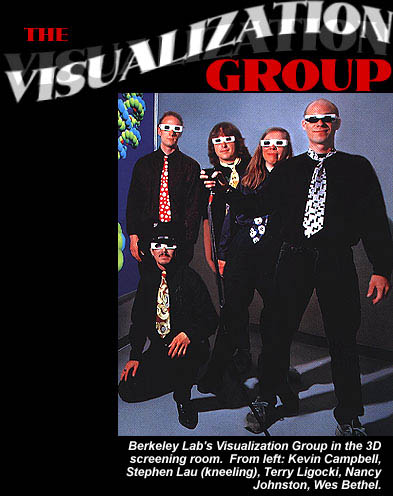
"Change is always a constant with us as the technology in our field ages quickly," says Johnston. "We rely on early-edge rather than leading-edge technology because it is better for serving our clients (scientific researchers) and that is what we are about."
With its latest software and hardware, the Visualization Group can offer their clients a full range of visualization services, from 3-D images and animated movies to virtual reality. No buzz word in today's culture is hotter than virtual reality or VR but what does it mean for scientists? VR allows them to not only see their data as a recognizable 3-D object, but to also manipulate it and maneuver it into positions that provide access to better views for a more thorough exploration.
The visualization of data, especially in a VR environment plays to the innate learning strengths of scientists. Explains Campbell, "Our visual system is good at detecting patterns of abnormality or deviations. Our eyesight is wired to spot an anomaly."
Members of the Visualization Group say that just about any scientific data can be visualized, and they welcome the opportunity to work with interested researchers. Once contacted, the group will meet and talk with the researchers to determine what it is they want to see. Success depends upon an interactive collaboration that continues throughout the life of the visualization project.
"We're not a job shop, we can't work in a vacuum," says Johnston. "If someone were to merely give us their data, tell us make an image, then leave, the project would not succeed. There are many different techniques for visualizing data and the needs of each project are unique."
For the creative minds of Berkeley Lab's Visualization Group, seeing is truly believing, and they are making believers out of all who see their results.
 VIRTUAL REALITY
VIRTUAL REALITY
PART TWO: THE SWIRLING FORCES OF TURBULENCE
